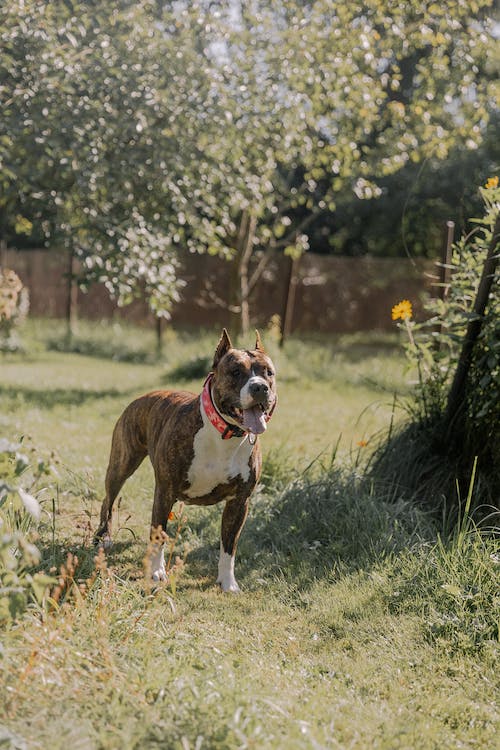A Guide to Training An American Staffordshire Terrier

Here is A Guide to Training an American Staffordshire Terrier and the responsibility of nurturing a well-behaved and disciplined canine family member. In this comprehensive blog post, we will delve into the art of training an American Staffordshire Terrier, exploring effective methods, essential commands, and the keys to building a strong bond with your furry friend.
Understanding the Breed:
Before embarking on training, it’s crucial to understand the unique characteristics of the American Staffordshire Terrier. Known for their intelligence, loyalty, and eagerness to please, Amstaffs respond well to positive reinforcement training. Patience, consistency, and a gentle approach are key when working with this breed.

Early Socialization:
Start training and socialization early in your Amstaff’s life. Expose them to various people, environments, and situations to build confidence and prevent behavioral issues. Positive experiences during this critical period contribute to a well-adjusted and sociable adult dog.
Basic Commands:
Teaching basic commands is fundamental to effective training. Start with simple commands like “sit,” “stay,” and “come.” Consistency is key; use the same cues and reward system each time. Reward-based training reinforces good behavior and fosters a positive association with commands.
Positive Reinforcement:
American Staffordshire Terriers respond exceptionally well to positive reinforcement. Use treats, praise, and affection as rewards for desired behavior. This method not only motivates your Amstaff but also strengthens the bond between you and your furry companion.

Obedience Training:
Beyond basic commands, focus on obedience training. Teach your Amstaff to walk on a leash without pulling, greet visitors politely, and remain calm in various situations. Obedience training enhances their manners and makes them more enjoyable companions in different settings.
Consistency is the cornerstone of successful training. Set clear expectations, use consistent commands, and apply the same rules consistently. Dogs thrive on routine, and a consistent approach helps them understand what is expected of them.

Avoid Negative Reinforcement:
Negative reinforcement can be counterproductive and harm the bond between you and your Amstaff. Instead of punishing undesirable behavior, redirect their attention to a positive activity. Consistently rewarding good behavior is more effective in shaping their conduct.
Patience and Understanding:
Training takes time, and each dog learns at its own pace. Be patient and understanding, especially during challenging moments. Avoid frustration and maintain a calm demeanor, as dogs pick up on their owner’s emotions.

Advanced Training and Activities:
As your Amstaff masters basic commands, consider advanced training and engaging activities. Amstaffs excel in agility, obedience trials, and even canine sports. These activities not only provide mental stimulation but also strengthen the bond between you and your furry friend.
Professional Training Classes:
Consider enrolling your Amstaff in professional training classes. Experienced trainers can offer guidance, address specific behavioral issues, and provide a structured environment for learning. Socializing with other dogs in a controlled setting enhances their overall training experience.
Conclusion:
In conclusion, training an American Staffordshire Terrier is a rewarding journey that strengthens the bond between pet and owner. Understanding their breed-specific traits, employing positive reinforcement, and being patient and consistent are the keys to successful training. Early socialization, basic commands, and advanced activities contribute to a well-rounded and well-behaved Amstaff. Embrace the training process as an opportunity to build a strong foundation for a lifelong relationship filled with joy, companionship, and mutual understanding.
